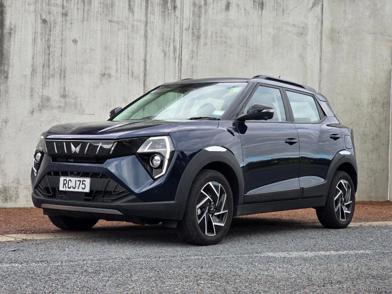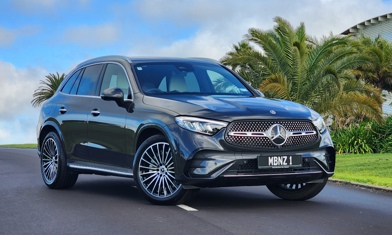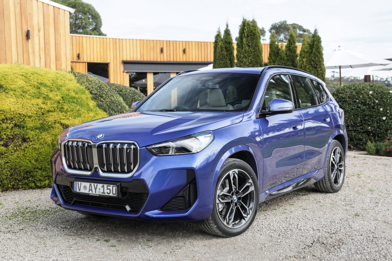The Toyota C-HR is a redundant model, and we mean that in the best possible way. When Toyota launched the original C-HR out of nowhere in 2017, it was really a “because we can” car; the brand was in the throes of proving it could make interesting models after all and decided to really push the boat out.
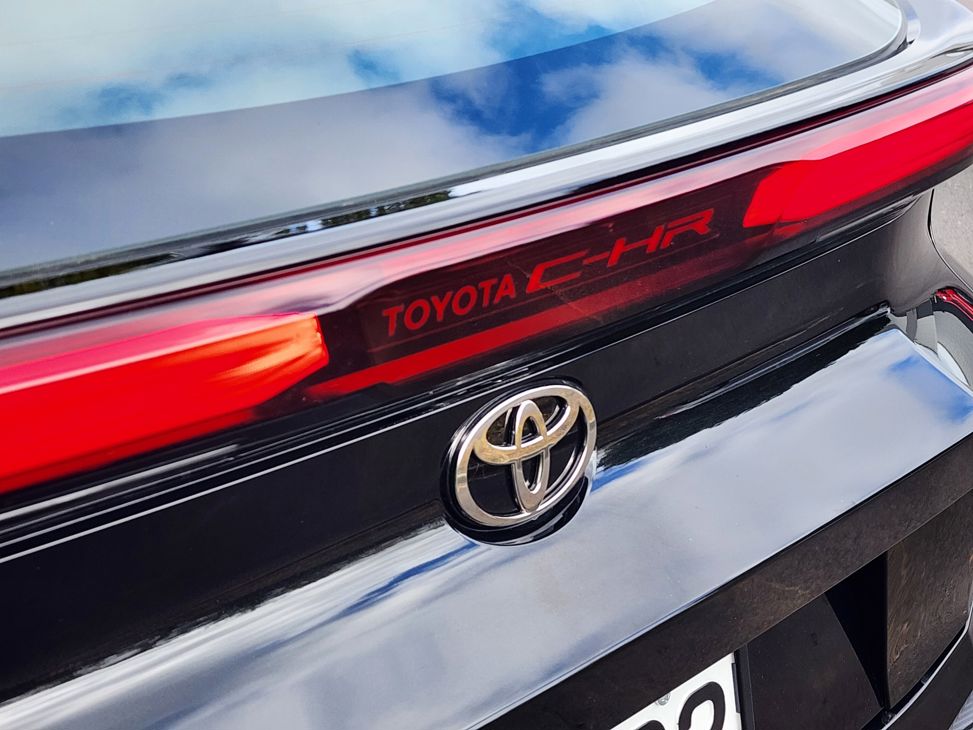
Mainstream compact-SUV it might have been, but the C-HR had deliberately polarising style, it didn’t put the sensible stuff first (like rear-seat and boot-space) and the touchpoints were as bespoke as Toyota could manage. Unique switchgear and gearlever, for example; unheard of for a maker usually so careful about cost-saving component-sharing.
It wasn’t a model any existing Toyota buyer really needed, but the company hoped some might really want it. They did, with over 1.5m sold globally.
Good enough to create a second-generation version, and here it is. If you want a smallish Toyota SUV you can go and buy a Corolla Cross, but the C-HR is slightly smaller and slightly more expensive and much more weird and so in essence it’s sticking to the original formula. It’s an SUV-coupe really, although Toyota isn’t so bold as to call it that.
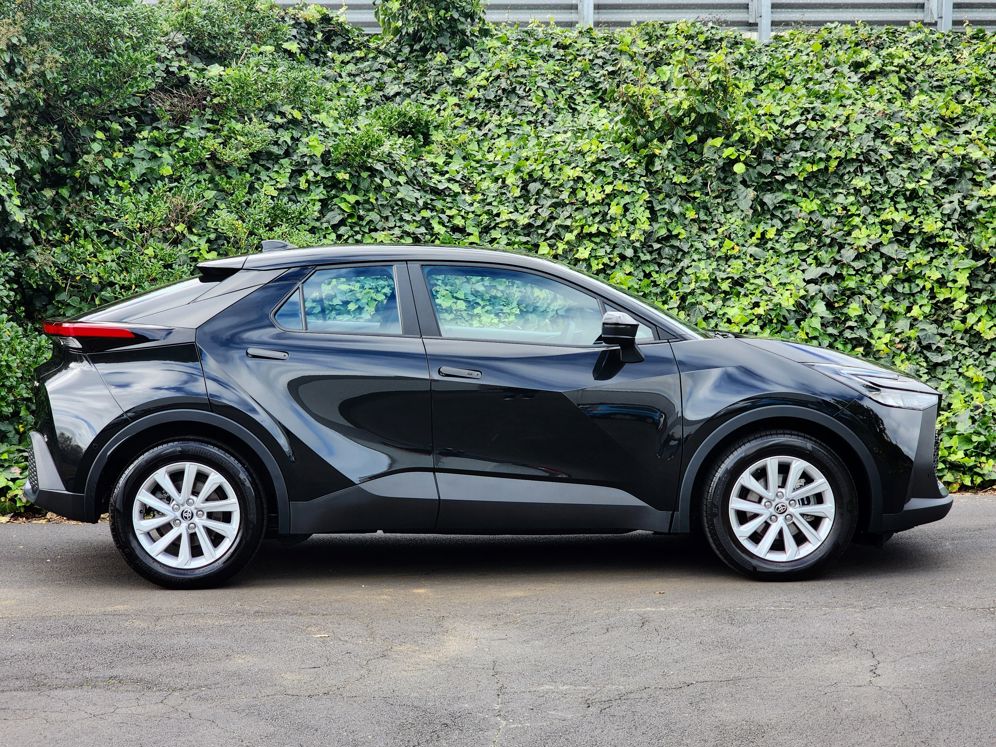
It’s definitely grown up a bit, though. The styling is on the same track but not quite as wacky. Not entirely mainstream, either. Our entry-level GX in basic black with unadorned alloys is as low-key as the C-HR gets, but it’s still quite striking. Start to go up the range, add a bit of colour (including some very bold two-tone finish on the very top versions) and you’re really standing out.
Yes, that range. It opens with the GX at $45,990, as featured here, which is $3k more expensive than the 100mm-longer Corolla Cross. You can step up to the $49,990 GXL with larger wheels, LED lights and snazzier cabin trim, including heated front seats and a wireless phone charger. Then there’s the $52,990 Limited, with larger wheels again, synthetic leather, head-up display and an upgraded JBL audio system.
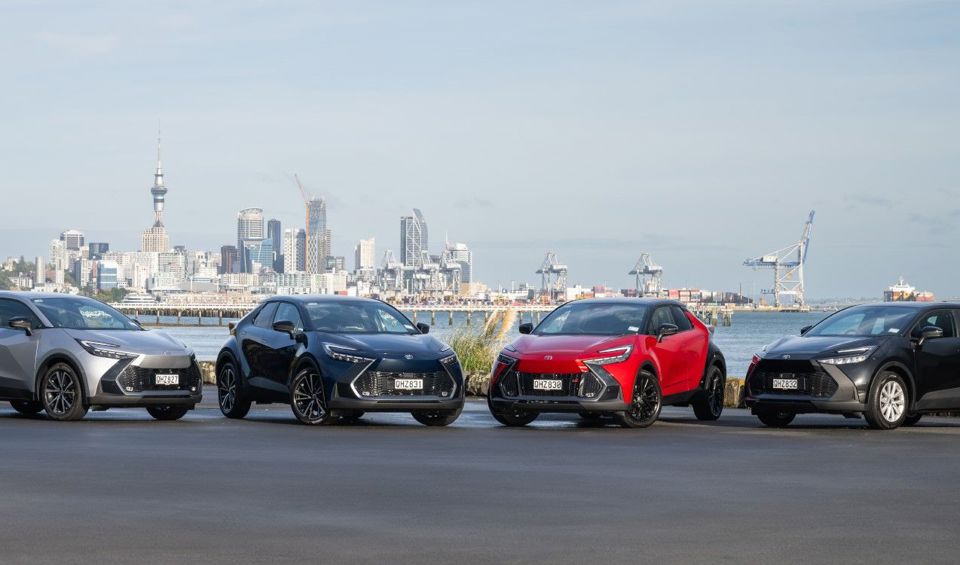
The flagship model is once again a GR Sport, but this $55,990 machine is now quite different to the rest of the range: it drops the 1.8-litre FWD hybrid powertrain for a 2.0-litre with E-Four AWD, similar to the setup on the RAV4 and Highlander.
The Limited and GR Sport are also the only two versions you can specify with two-tone paint. And that’s not just the roof: the rear section of the body aft of the doors is also dipped in black. It’s pretty bold.
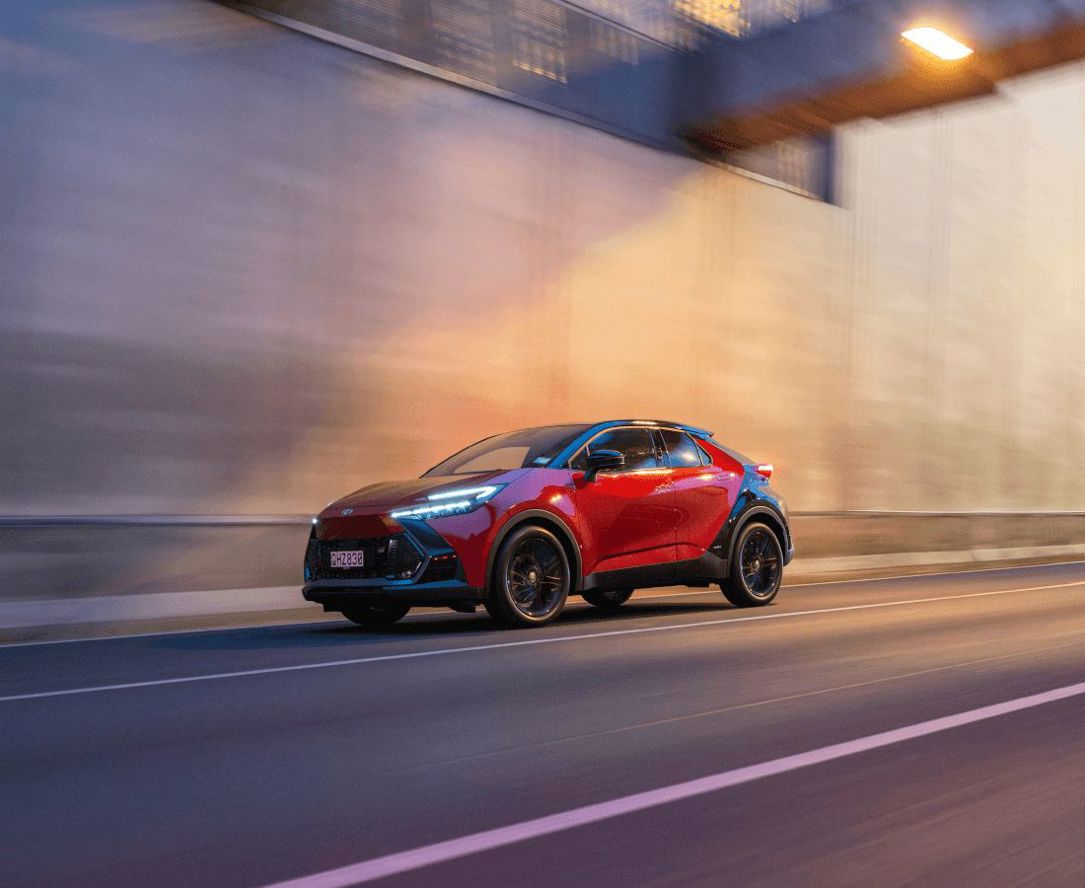
Alas, none of that for our basic GX. But it’s not that basic, to be honest. It has the same 103kW hybrid powertrain with lithium-ion battery as the rest of the FWD range and the full suite of Toyota Safety Sense equipment, as well as a few goodies like automatic parking that can handle surprisingly complex scenarios.
You are missing out on the likes of 4-lens LED headlights and power boot opening, but there are a few aspects of the GX some might prefer over the higher-end models: it has unpainted plastic trim on the outside instead of painted gloss-black and the chunky seat fabric looks just as classy as the more luxurious models’ fake leather.
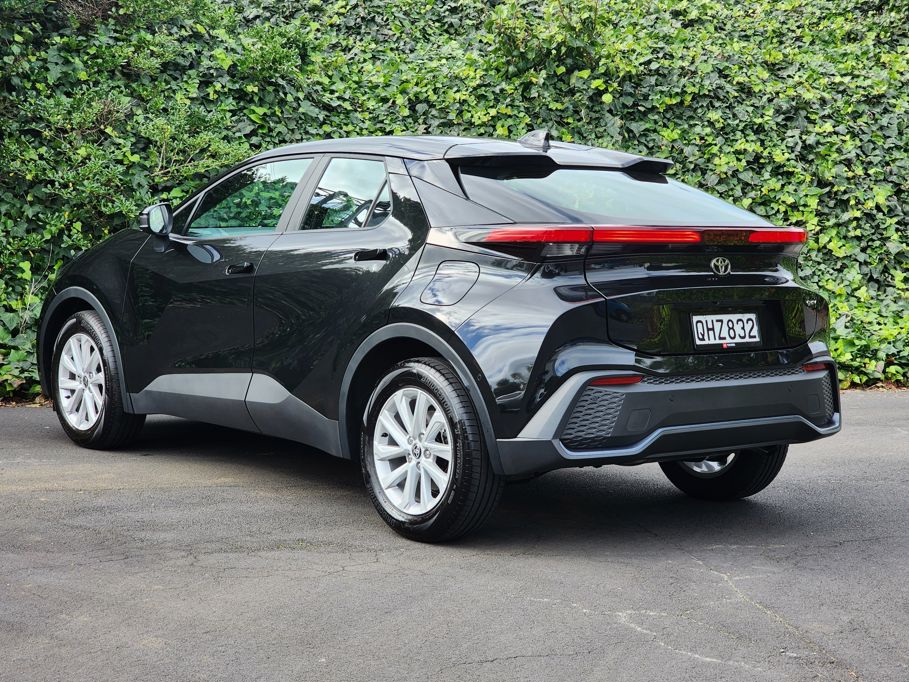
The idea was the C-HR would sell on looks, but it has always been a better-than-Toyota-average drive, too. Toyota’s hybrid system is working at its peak in these latest models, with strong performance down low and the potential for truly astonishing fuel economy. The system can only drive for a couple of kilometres on electric power alone, but it regenerates very quickly and it’s not unusual for the computer to show 60-80 per cent EV power for short urban trips.
We took the GX around a favourite test route of equal parts urban slog, motorway driving and enthusiastic backroads driving and it came back on 5/100km. That’s pretty impressive when you’re not really trying.
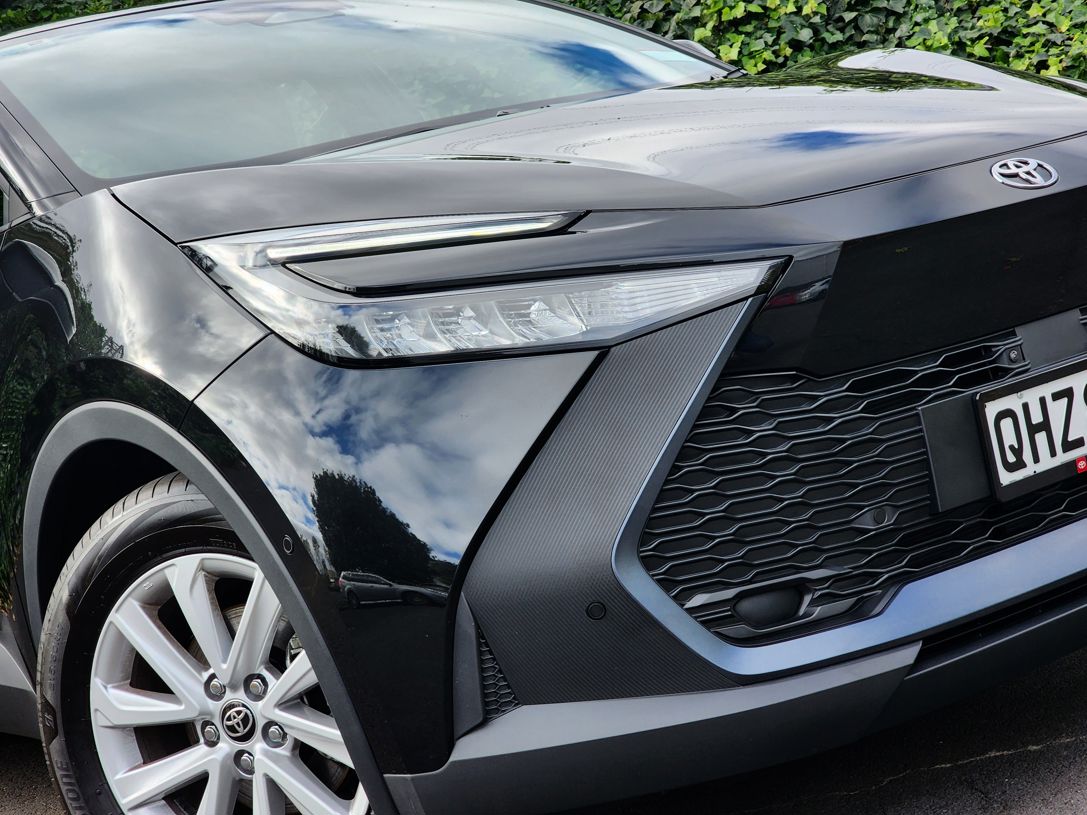
You wouldn’t call the FWD C-HR sporty (we’re yet to sample the GR-S); but the ride is relatively firm even on the GX’s 17-inch wheels and the handling is composed and controlled. It’s a nice balance: not aggressive enough to put off city drivers but still engaging enough to keep the driver interested in the corners.
This is also a very quiet and refined car. Engine and wind noise are incredibly well suppressed; so even if you’re not a fan of the way continuously variable transmissions sometime flare up under hard acceleration, you’re not always aware of it in this car.
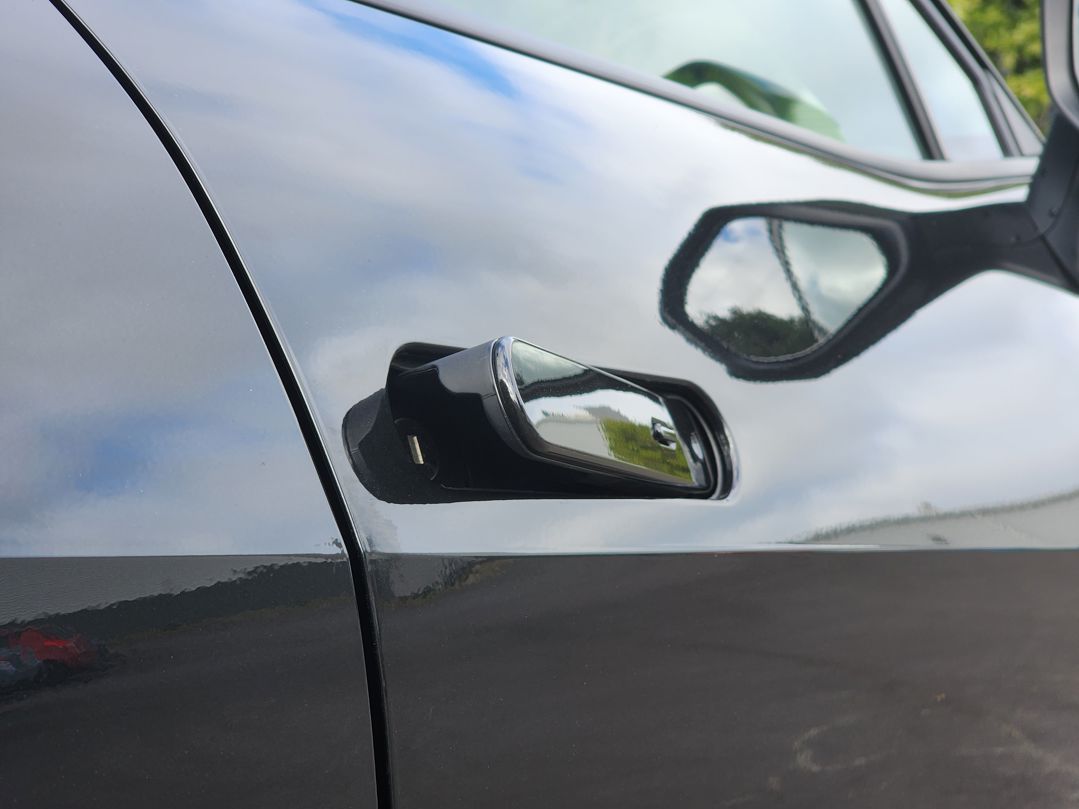
The new model has ditched the previous version’s hidden rear doorhandles, but it has a trick of its own: EV-like flush latches that open and close with a curiously loud clunk. Anyway, they’re a first for Toyota.
The cabin still has a bespoke feel compared to other small Toyotas, although we’d venture there’s more shared here than before. There’s a quality feel and the big 12.3in infotainment screen looks pretty impressive.
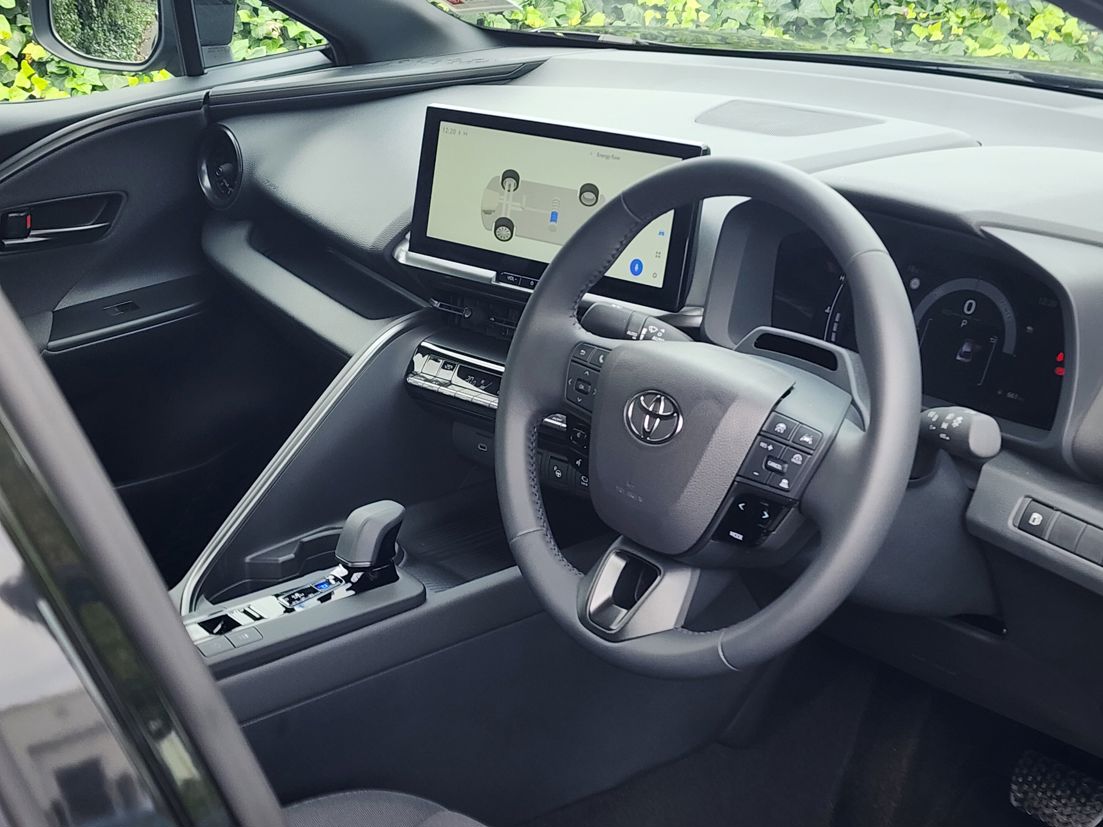
The C-HR has never claimed to offer the last word in rear-seat space or cargo carrying. But actually both are a lot better in this model; the back seat has reasonable head and legroom, although the incredibly high waistline (no view out at all) means children will still be feeling woozy on anything but very short trips.
The 356-litre boot is decent for a car of this size and while we’re back there, the illuminated “C-HR” logo along the tailgate garnish that lights up to greet you as you approach, Lexus-style, is a really nice touch.
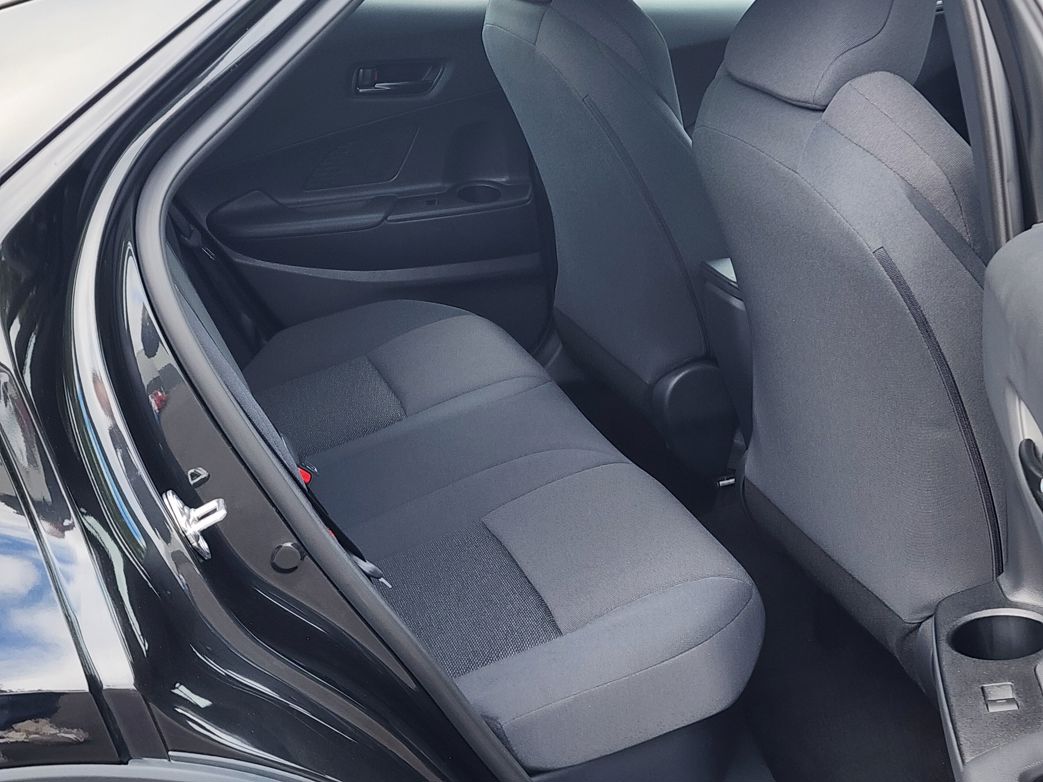
We’re less keen on the cynical decision to leave the rear wiper off on this car; presumably the reasoning is that it’s a “coupe” and therefore shouldn’t have one. Newsflash: that sloping rear window really needs one.
But then that’s the C-HR all over. It’s a tricky balancing act between what you expect of a mainstream Toyota SUV and the company’s desire to serve up a sleek coupe-style thing that feels a bit spesh. For the most part it really works; the C-HR looks striking, does the eco-thing while driving well and is not nearly as impractical as it could be.
ENGINE: 1.8 or 2.0-litre petrol 4-cylinder with hybrid system POWER: 103kW (combined)/142Nm (engine) or 145kW (combined)/190Nm (engine) GEARBOX: Continuously variable transmission, FWD or AWD CONSUMPTION: 4.4-4.5l/100km (3P-WLTP) PRICE: $45,990-$56,990.


















